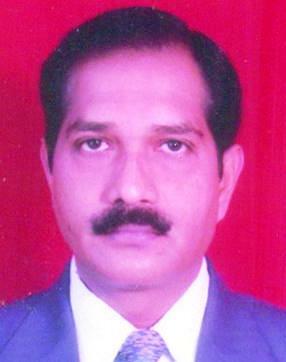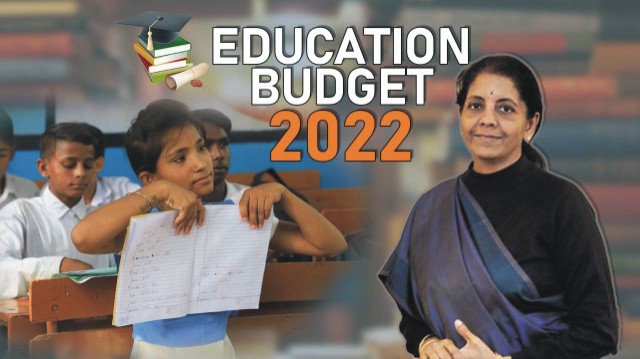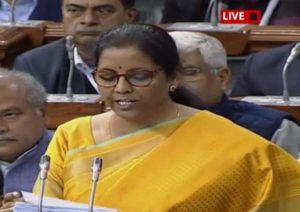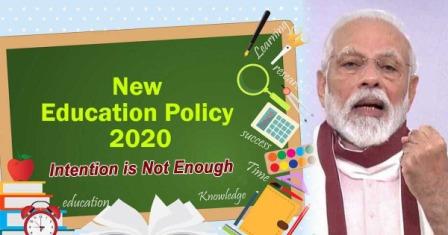

The key-takeaway for educational sector from the announcements made by Finance Minister Nirmala Sitharaman while presenting the Budget 2022-23 on 1 February are expansion of the PM e-VIDYA initiative, proposal to launch a digital university and development of e-content in all Indian languages. The budget for educational sector 2022-23 has been increased to Rs 1.04 lakh crore from Rs 93,224 crore (Budget estimate) in 2021-22.

However the revised estimate for 2021-22 is Rs 88,001 crore. But if we analyse it closely we can see that the increase in overall allocation is primarily because of increase in the amount for Samagra Shiksha (School Education Sector) from Rs 31,050 crore in 2021-22 to Rs 37,383 crore in 2022-23.
In the backdrop of India’s fragile economy impacted by the pandemic, the Central government has implemented the new education policy-2020 (NEP-20) with a view to increasing participation of weaker sections, raising enrolments and improving quality of relevant courses of studies at all levels of education.
According to Professor MM Ansari, former member University Grants Commission (UGC) and Consultant of Planning Commission of India, “At the time when education sector needed substantially higher budgetary allocation for implementing new proposals, as perceived in NEP, the Union budget 2021 reduced educational allocation by 6%, from the previous year of allocations. This reduction not only belied the expectations for strengthening education sector but also dented the measures for educational reforms as undertaken by the government.”
“In the Budget 2022-23, it was expected that the government may allocate adequate funds to effectively implement NEP-20 in letter and spirit. Specifically, the following policy decisions may be taken to justify the reformative measures”, said the former UGC member.
He has outlined some key areas which require immediate attention and they are:
First, due to paucity of money, more than one-thirds of teachers’ posts are vacant from primary to college/ university levels, which is adversely affecting quality of teaching and research. The issue of teacher’s vacancy, including the aspects of faculty development, must be addressed by providing funds commensurate with the requirements to fill the teachers’ vacancies.
 Second, the Central government is levying two plus one (2+1) percent of surcharge, as education cess, on Income Tax since 2008 for the promotion of elementary and secondary/ higher education research, respectively. Evidences examined by this writer show that the funds collected under this provision is not used for the purposes for which this additional tax is paid by the taxpayers. Diversion of education cess for purposes other than education development tantamount to deception with the honest taxpayers. This must stop.
Second, the Central government is levying two plus one (2+1) percent of surcharge, as education cess, on Income Tax since 2008 for the promotion of elementary and secondary/ higher education research, respectively. Evidences examined by this writer show that the funds collected under this provision is not used for the purposes for which this additional tax is paid by the taxpayers. Diversion of education cess for purposes other than education development tantamount to deception with the honest taxpayers. This must stop.
Third, a majority of students pursuing technical and professional courses in self-financing private universities have availed of education loans. Unfortunately, they are failing to payback loans to the Banks either because of lack of employment or inadequate rise in annual pay packages due to sluggishness of economy. NPA on account of education loans is one of the highest, therefore. The government must consider providing waivers of interests on students’ loans to alleviate the interest burden on educated youths.
Fourth, as NEP-20 has observed, less than 10 percent of India’s working population is vocationally trained as compared to over 60 percent corresponding labour force for developed countries. In order to improve productivity of resources and competitiveness of manufacturing sector, the government must invest in entrepreneurial education and training, for which substantial budgetary allocation must be made.

Fifth, while online education has widened the access to various courses of learning to all the aspirants of learning, the digital divide has perpetuated educational disparities. The government may allocate necessary funds for infrastructure development to ensure access to internet facilities, including laptops and computers to all the learners, particularly from the poor families and backward regions.
Finally, NEP-20 is committed to contain commercialisation of education. Most private educational institutions are established and run as a family business. Due to lack of transparency in functioning of such institutions, there is rampant corruption in admission to various programmes and recruitment of staff. Finance Minister may do the needful to end the exploitation of knowledge seekers on whose shoulders the future of this country rests.
In the first year of the implementation of NEP-20, the government missed the opportunity of allocating adequate resources as the Union Budget-21 reduced the outlays by 6%, about Rs. 6000 crores, from the previous level of allocation in 2020. Let us hope that the upcoming Budget may make a beginning to move towards allocation of 6% of national income, from the current level of 2.7%, for education as oft-repeatedly promised by all the successive governments. ![]()
_____________
Also Read:
Centre’s Opaque Auction Rules For Pulses Rip Off Govt Coffers, Help Millers Strike Rich
Need to amend laws like UAPA to provide for punishment for those who slap false cases
Global Arms Trade: Who are the real winners?
Why not 40 pc tickets for women in Punjab and elsewhere?
Punjab – How a deadly cocktail of Agri-Water-Energy nexus going to destroy it?
North Pole and the ideological conflict of RSS & Hindutva
Politics of Symbolism: Dalit Chief Ministers in India

Disclaimer : PunjabTodayTV.com and other platforms of the Punjab Today group strive to include views and opinions from across the entire spectrum, but by no means do we agree with everything we publish. Our efforts and editorial choices consistently underscore our authors’ right to the freedom of speech. However, it should be clear to all readers that individual authors are responsible for the information, ideas or opinions in their articles, and very often, these do not reflect the views of PunjabTodayTV.com or other platforms of the group. Punjab Today does not assume any responsibility or liability for the views of authors whose work appears here.
Punjab Today believes in serious, engaging, narrative journalism at a time when mainstream media houses seem to have given up on long-form writing and news television has blurred or altogether erased the lines between news and slapstick entertainment. We at Punjab Today believe that readers such as yourself appreciate cerebral journalism, and would like you to hold us against the best international industry standards. Brickbats are welcome even more than bouquets, though an occasional pat on the back is always encouraging. Good journalism can be a lifeline in these uncertain times worldwide. You can support us in myriad ways. To begin with, by spreading word about us and forwarding this reportage. Stay engaged.
— Team PT


Copyright © Punjab Today TV : All right Reserve 2016 - 2024 |